
In this Prawn Files series, I am showcasing the different types of prawns that are available in our local wet markets. Over the years, I have spoken to many hawkers who are passionate about prawns. The uncle at Wah Kee prawn noodles often boasts about his Ang Kah (Red Leg) Prawns and Lum Bueh (Blue Tail) prawns which he uses for his prawn mee, while the man at Che Jian Hokkien Mee would proudly show me his Sua Lor prawns that he uses to make his stock. So what are Ang Kah prawns and what are Sua Lor? Why is one good for prawn mee soup while the other is better for Hokkien Mee?
Over the last few months, I have been visiting the wet markets and talking to various fishmongers and foodies about prawns. I have contacted biologists both locally and overseas to try to get an accurate identification of the prawns here in Singapore. There is very little information about our local prawns online and I hope this will become a good resource for the serious foodie!
Having talked to so many fishmongers, I have begin to realize that theirs is yet another dying trade. Most younger generation Singaporeans buy their seafood from the supermarkets rather than the wet markets. Actually, quite a lot don’t even cook nowadays! As a result, the wet markets are not as well attended as they were in the past. There are also a lack of young people who are willing to take on this trade since they don’t see a bright future for it. So, I am a little worried that in twenty years’ time, I will not be able to buy fresh local seafood anymore.
I hope to change that through this series of posts. Once you have discovered the wide variety of fresh prawns and that are available at our wet markets, I am sure you too will make a beeline for the market the next time you are looking for prawns for your next BBQ party!
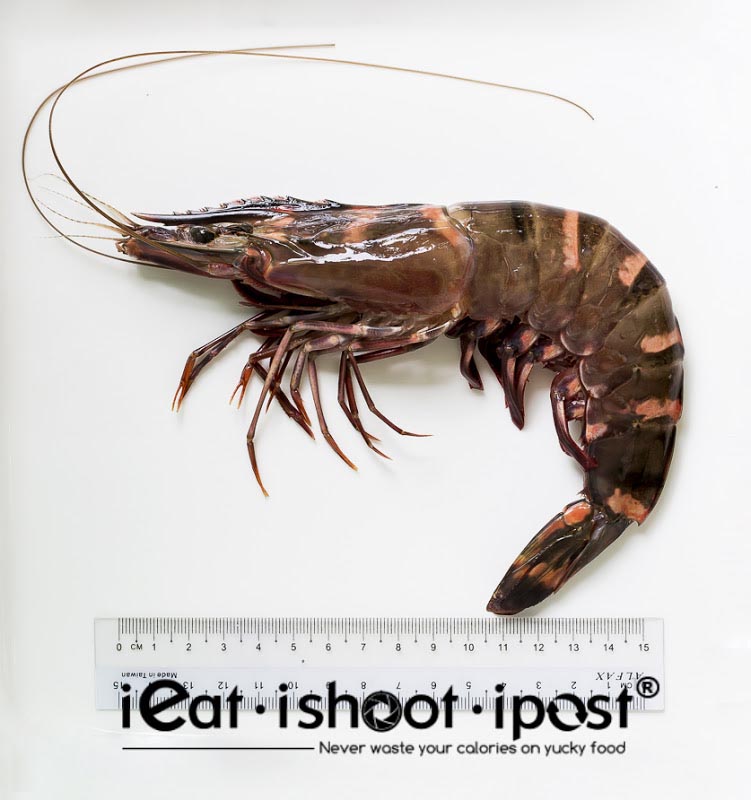
Penaeus monodon
Common names: Giant Tiger Prawn, Asian Tiger Prawn
Local Name: Gao Chap Hei 九褶虾 (lit nine stripes), Lao Hau Hei 老虎虾
Let’s start with the very impressive Giant Tiger Prawn. This is the prawn that made Newton Circus food centre infamous when 8 of these Giant Tigers were sold to some unsuspecting American tourists for $239!
So, just what prawns are these are how much do they really cost?

The Giant Tiger Prawn is found in local waters and is the largest prawn in the world. It can grow to 33cm and can be easily be recognized by the light and dark stripes on the tail. The Teochews call them Gao Chap Hei 九褶虾 which refers to their very distinctive stripes. (I don’t know how they manage to count nine stripes though!)
Wild caught Giant Tiger Prawns are prized by connoisseurs while the farmed ones are generally shunned. At the wet markets, you can easily recognize the wild variety as they are usually very large and come in a variety of colours which can range from greenish black to rusty brown. The farmed ones are usually uniform in size and bluish grey in colour.
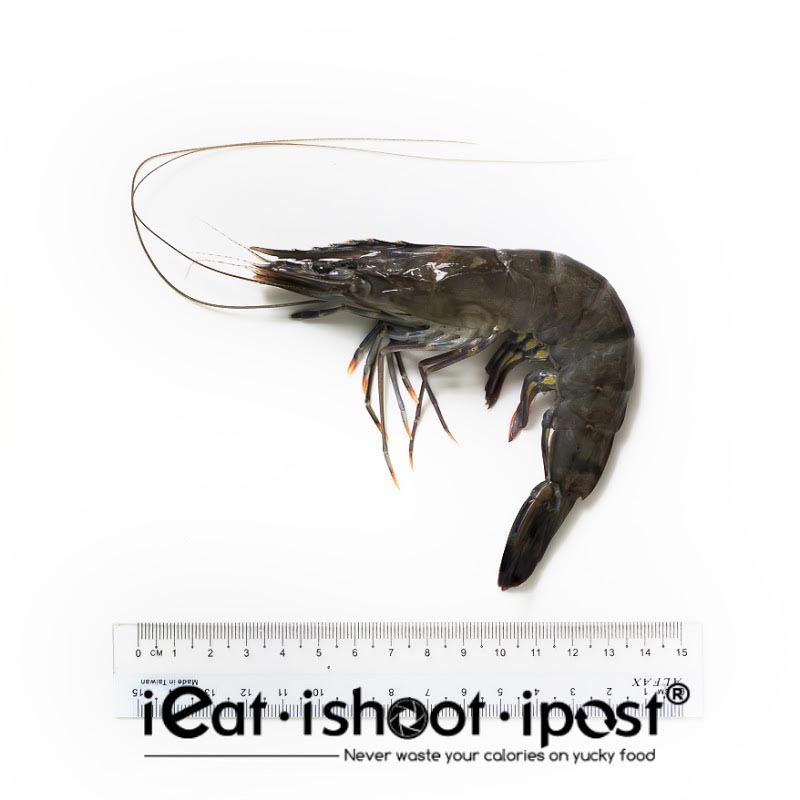
Tastewise, the Giant Tiger Prawn is very meaty and quite flavourful. The meat of the large ones can be tough if not handled properly. They are excellent for BBQing and for impressing your guests. It costs around $38 to $40/kg which makes it one of the most expensive prawn in the market. However, you do get a better yield (more meat than shell) with the Giant Tiger Prawn than from Lobster and they still have that wow factor that makes it quite a crowd pleaser. The only problem is that they are not always available, so you can’t really plan a BBQ ahead of time and the only way is to buy them ahead of time and freeze them. The great thing about prawns is that they freeze pretty well and thaw quickly without deteriorating in quality too much. So they are really a very easy ingredient to work with!
The farmed Tiger prawns are considerably cheaper. The smaller ones like the one in the photo cost around $23/kg (expensive this year due to lack of supply because of virus affecting the farms) and they can mostly be found at the supermarkets. Most of the fishmongers who pride themselves in selling quality seafood will not sell them. They can have an off smell if they are not fresh and generally they are shunned by the serious foodies. However, because they are farmed prawns, you can see them being sold live at seafood restaurants. When cooked, the farmed variety becomes a bright orange colour with white strips which are really impressive to look at. If they are cooked live, the meat is very sweet and the texture will be excellent but they lack flavour. The colour of the farmed Tigers are usually more intense than the wild ones because some farmers will add astaxanthin into the feed. Astaxanthin is compound found naturally in crustaceans which turn into a bright orangey colour when cooked. It is often added into the prawn feed in order to intensify their colour when cooked.
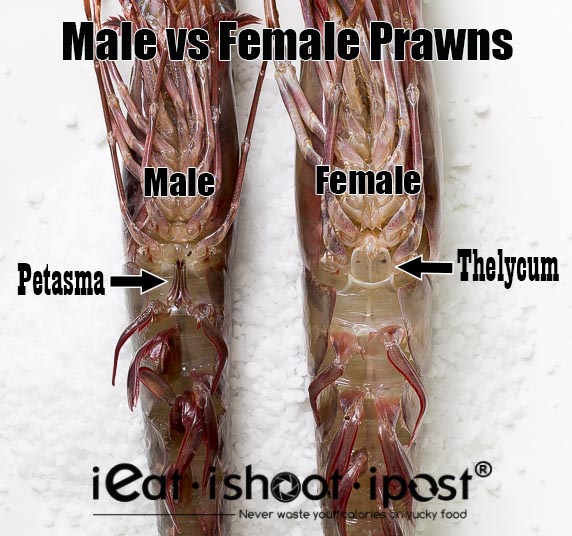
Now, here is a question that some of the fishmongers who have been selling prawns for years can’t answer.
How do you tell between a male and female prawn?
The majority of people don’t know the answer to this question because there really is not much difference in the taste of a male and female prawn, which is why no one really bothers. Now, you have been peeling and eating prawns for so many years, have you noticed the difference?
Well, it turns out that the male prawns have a “penis” which is known as the petasma which is located between the first pair of the swimming legs (pleopods). The female on the other hand has a thelycum between the last pair of walking legs (periopods). This might be a little piece of useless trivia for most people but for the prawn aficionado, identification of certain prawn species is often determined by the shape of the sexual organs. We will see how important this is later in my post on Sua Lor prawns.

Penaeus semisulcatus
Common name: Green Tiger Prawn, Groove Tiger Prawn
Local Name: Soi Kar Hei (lit small leg prawn), (sometimes improperly called) Gao Chap Hei 九褶虾 (lit nine stripes)
The other type of Tiger Prawns that are commonly found in the markets are the Green Tiger Prawns. They are easy to spot because of their light brown colour and distinctive red and white legs and antennae. (Those long whiskers) These should not be confused with the Brown Tiger prawns (penaeus esculentus) which are another species found in Australia.
These Green Tiger Prawns can sometimes be found together with the Ang Kah prawns. The flesh is firm, bouncy and sweet. They are preferred over Ang Kah as they are more flavourful. Both Ang Kahs and Green Tigers are used by Jumbo Prawn Mee soup sellers like Beach Road Prawn Noodles. They are great if you butterfly them and use them in Claypot tofu and also great as Tempura. They cost around $24/kg to $28/kg depending on size and freshness.
Where to buy
Green Tigers should be available at most wet markets. Local Giant Tigers can be found sometimes at Lor Ah Soo market. I have seen them at Chinatown market where one particular stall imports them from Papua New Guinea. Tekka market should also have them. If you go to Jurong Fishery Port, you can also buy them in small quantities like 1 – 2 kg as they usually don’t come in large quantities. You will have to go around 1 – 2 am for the best chance to buy them.
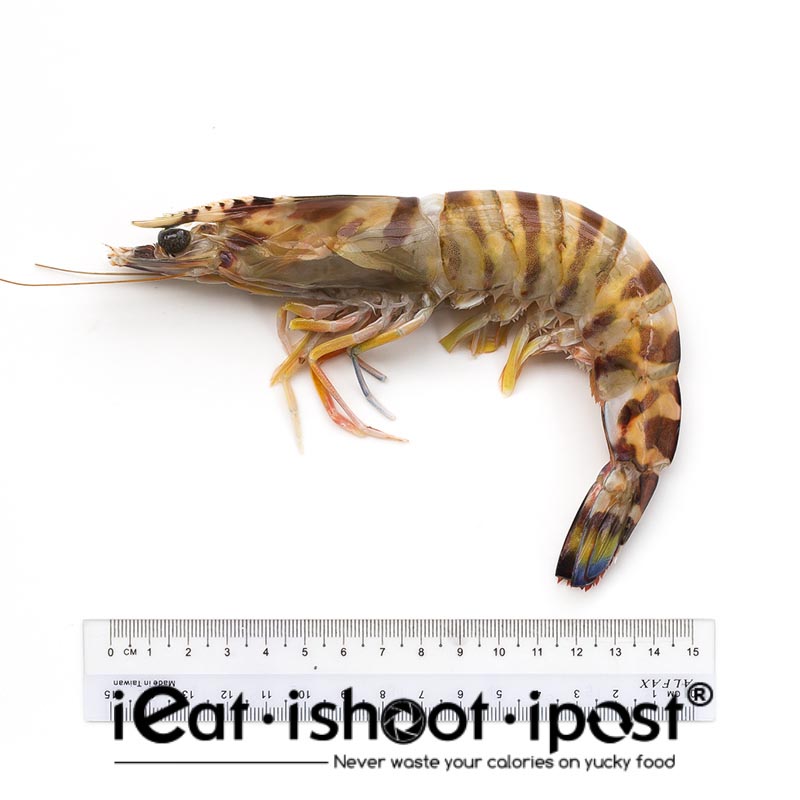
Marsupenaeus japonicus
Common name: Kuruma Prawn
Local Name: Gao Chap Hei 九褶虾 (lit nine stripes)
Kuruma Ebi is considered by the Japanese to be the tastiest prawn. They are the first choice for tempura. At the Tempura Ten Shin, there is a tank of live Kurumas which are killed on the spot for Tempura and they cost a bomb! These live ones are farmed in Japan and airflown to Singapore. They arrive packed in a box with sawdust and amazingly they are still alive even when they are out of the water for so long!
Where to buy
Although Kurumas are available in local waters, you won’t readily find them at the markets. I picked up this specimen on a visit to Jurong Fishery Port and there was only a few of them amongst thousands of Green Tiger Prawns.
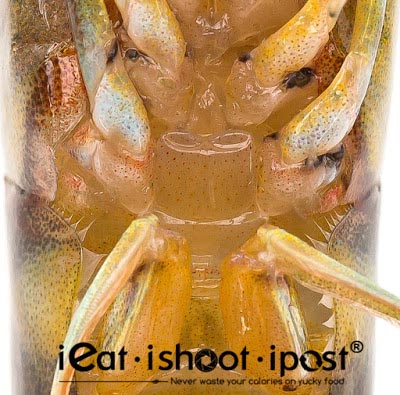
Thelycum of Kuruma Prawn
These Kurumas are quite similar to the Brown Tiger Prawns. The way to tell them apart is to look at the female sexual organ. The Kuruma is the only prawn that has a pouch like thelycum, hence its scientific name, Marsupenaeus, as in marsupials (Kangaroos). The brown colour band on the last section of the tail is also not complete ie it does not go all the way across the tail. In the Brown Tiger, the band goes right across the tail.
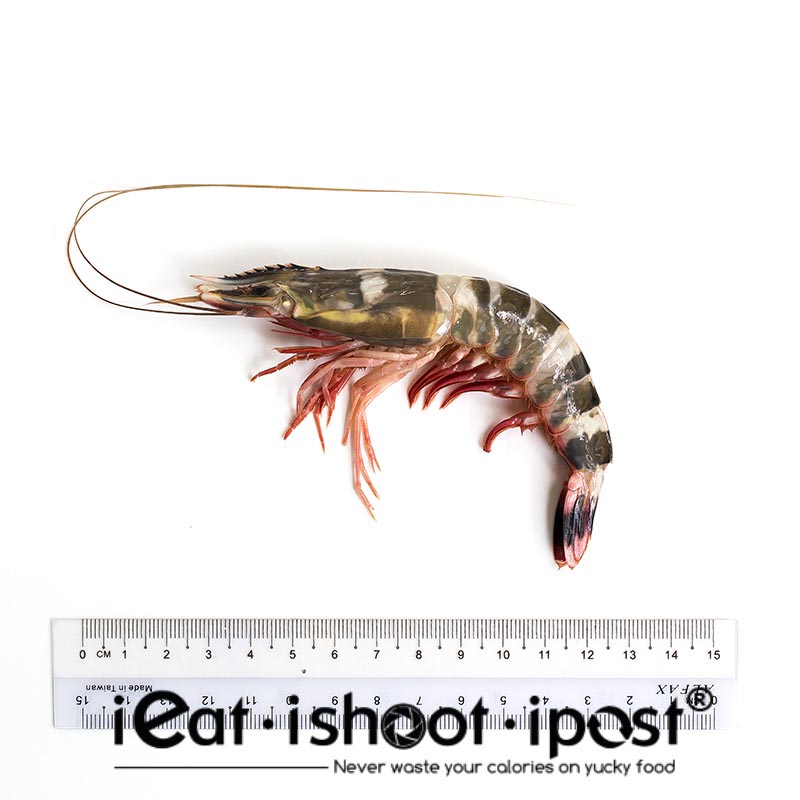
Parapenaeopsis sculptilis
Common name: Rainbow Shrimp, Cat Tiger Prawn
Local names: Mata Hei (Police shrimp)
These shrimps are commonly found in Penang and are used to make the stock for prawn mee. They are less commonly found in Singapore but you can occasionally see them on sale, usually mixed with other smaller prawns. The colour and pattern of the prawn is very distinct but they are often erroneously called Tiger prawns. The meat is crunchy and sweet and the shell has a egg shell like crunch when cooked. They are small to medium sized prawns which are good for making soup and for frying vegetables. They turn into a beautiful orange colour with white bands when steamed which make them ideal for a cold shrimp cocktail.

Where to buy
These are not very commonly found. I saw a lot of them at Pontian Wholesale Market in Johor. Locally, I have only ever seen them sold at Kovan Wet Market.
Conclusion
That completes this first post on local prawns! We will be looking at some Ang Kahs in the next post! In the meantime, do pay a visit to your local wet market! You will be amazed at the quality and variety of prawns you can find there which you will never find at the supermarket!
Other blog posts in the series:
Part 2: The Coloured Prawns
Part 3: The Sand Prawns
Part 4: The Small Prawns
Acknowledgements
I wish to thank the following experts for helping me with the identification of the prawns:
1. Prof Tin Yam Chan, Institute of Marine Biology of the National Taiwan Ocean University
2. Ken Loon, The Naked Finn



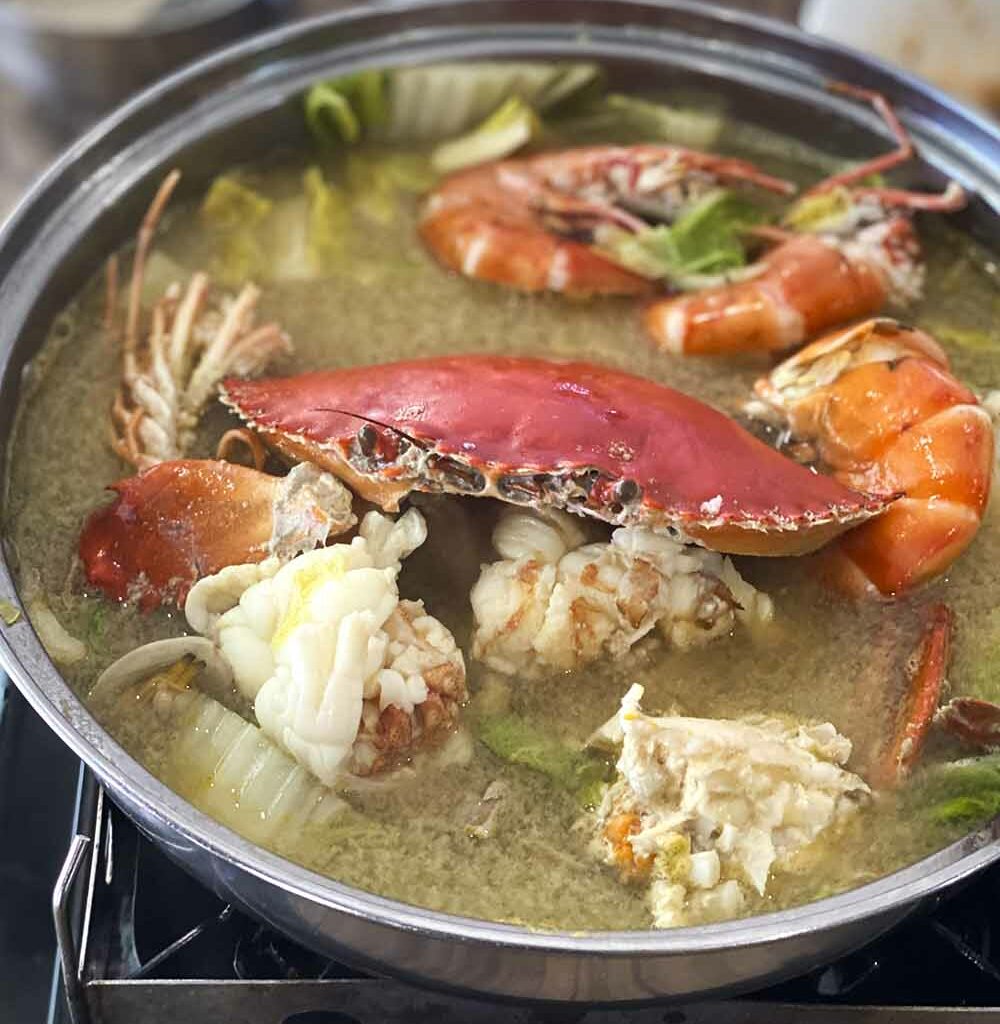

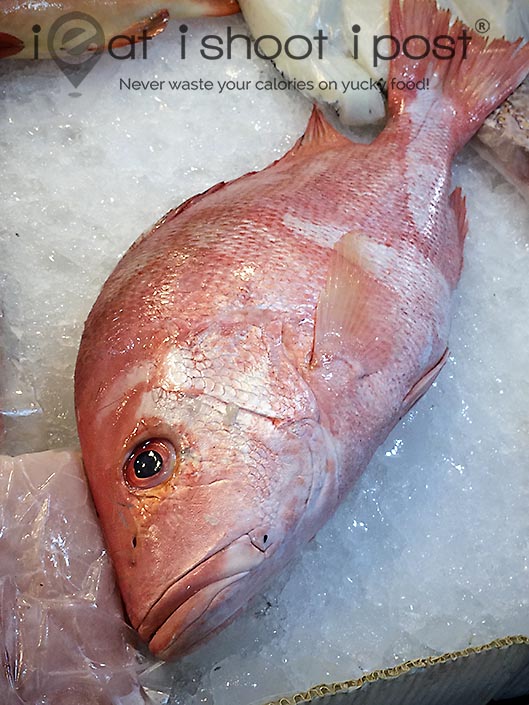


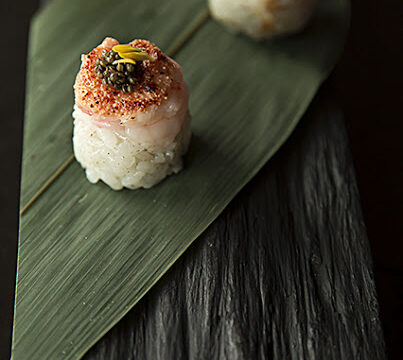



Where to buy king prawn?
Dr Leslie, may i know what’s the chinese name for the Green Tigers? I tried to google but nothing came up.
They call it gao zhap ie nine stripes in Hokkien.
Ok! Thank you!